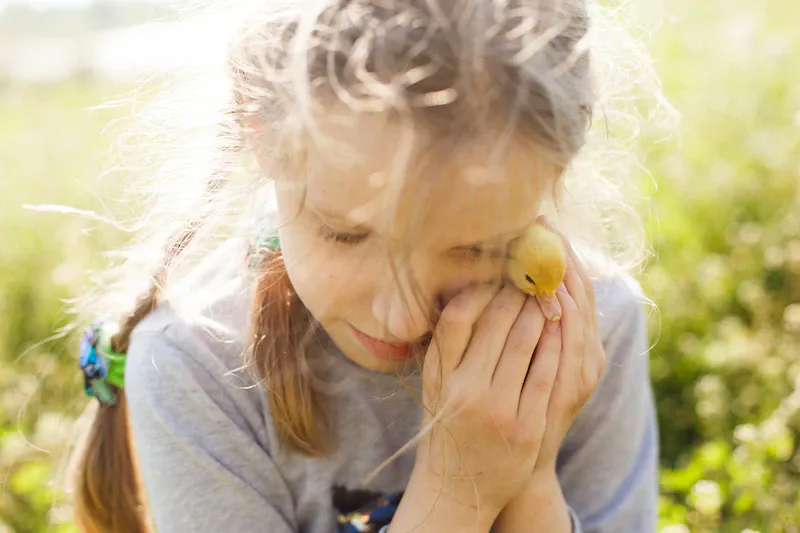Breaking Down Stigma: Juvenile Sex Offenders Deserve Empathy and Treatment

Breaking Down the Stigma Around Juvenile Sex Offenders
The topic of juvenile sex offenders is a difficult one to discuss, as it carries a great deal of stigma and shame. Many people are uncomfortable even acknowledging that juveniles can engage in sexually inappropriate behavior, let alone accepting them back into society after they have been punished for their actions. However, it’s important that we break down this stigma and work to understand and support these young individuals as they try to move forward with their lives.
One of the main points made in the video script is that juvenile sex offenders are often subject to harsher punishments than adult offenders, despite the fact that they are still children and their brains are not fully developed. The speaker argues that this is unfair and counterproductive, as it only serves to further marginalize these individuals and make it more difficult for them to reintegrate into society.
Another key point is that juveniles who have committed sexual offenses are often stigmatized and ostracized, even after they have served their time and completed any required therapy or counseling. This can make it difficult for them to find employment or housing, and can even lead to them being targeted for harassment or violence.
To address these issues, the speaker advocates for a more compassionate and evidence-based approach to dealing with juvenile sex offenders. This includes providing them with age-appropriate therapy and counseling, as well as opportunities for education and vocational training. It also means working to reduce the stigma surrounding these individuals, so that they can be reintegrated into society and lead productive and fulfilling lives.
Myths about juvenile sex offenders
There are many myths and misunderstandings surrounding juvenile sex offenders. Let’s take a look at a few of the most common ones:
**Myth #1: Juvenile sex offenders are irredeemable and will always reoffend.**This myth suggests that once a young person has committed a sexual offense, they are destined to continue committing such crimes. However, research shows that this is not true. In fact, studies have found that most juveniles who commit sexual offenses do not reoffend.
**Myth #2: Juvenile sex offenders are only male and victimize only young girls.**This is another common myth about juvenile sex offenders. In reality, juvenile sex offenders come from all genders and sexual orientations, and they can victimize people of any gender or age. The majority of juvenile sex offenders are male, but females can also commit these crimes.
**Myth #3: Juvenile sex offenders are always victims of sexual abuse themselves.**While some juvenile sex offenders have experienced sexual abuse, this is not always the case. In fact, research has shown that there is no one specific factor that leads a young person to commit a sexual offense. Rather, a variety of individual and environmental factors can contribute to such behavior.
**Myth #4: Juvenile sex offenders are always intentional and malicious in their actions.**This myth suggests that all juvenile sex offenders are predatory and intentionally seek out victims. However, many young people who commit sexual offenses do so impulsively or due to a lack of understanding about appropriate sexual boundaries. It is important to provide education and support to these young people to prevent future offenses.
By breaking down these myths and understanding the realities of juvenile sex offenses, we can better address the issue and provide support and resources to both victims and offenders.
The Reality of Juvenile Sex Offenders
Juvenile sex offenders are not irredeemable monsters. In fact, most of them can be rehabilitated with proper treatment and support. Here are some important points to consider when it comes to understanding the reality of juvenile sex offenders:
- Most juvenile sex offenders are not violent predators. They may have engaged in inappropriate sexual behavior, but they are not typically violent or dangerous.
- Many juvenile sex offenders have experienced trauma or abuse themselves. This is not an excuse for their behavior, but it is important to understand that these young people often have complex backgrounds that contribute to their actions.
- Treatment and rehabilitation can be very effective for juvenile sex offenders. With the right support, these young people can learn to understand the impact of their actions, develop healthy coping mechanisms, and ultimately become productive members of society.
It is important to remember that juvenile sex offenders are not the same as adult sex offenders. They require different treatment and support in order to overcome their issues and move forward in a positive direction. By breaking down the stigma and myths surrounding juvenile sex offenders, we can create a more compassionate and effective justice system that truly serves the needs of our communities.
Juvenile sex offenders are not just creepy strangers
Contrary to popular belief, most juvenile sex offenders are not strangers who lurk around in parks or alleyways waiting to prey on innocent victims. According to research, the majority of juvenile sex offenders know their victims and are often related to them or familiar with them in some way.
In the video, it is mentioned that one common misconception is that juvenile sex offenders are only male. However, the truth is that female juvenile sex offenders also exist, and they may victimize both boys and girls.
Another important point to note is that juvenile sex offenders are not irredeemable monsters. With proper therapy and support, many juvenile sex offenders can learn to understand and manage their behavior. It is important to address the root causes of their behavior, such as exposure to sexual abuse or trauma, rather than simply punishing them.
It is also important to recognize that not all sexual behavior by juveniles is abusive or harmful. Many times, the behavior is simply a result of curiosity or exploration, and does not involve coercion or force.
Overall, it is important to move away from the stereotype of the creepy stranger when discussing juvenile sex offenders. By understanding the reality of the situation and recognizing that rehabilitation is possible, we can work towards breaking down the stigma and providing support for both the victims and the offenders.
Low recidivism rates for juvenile sex offenders
Despite the widespread belief that juvenile sex offenders have high recidivism rates, studies have shown that this is not the case. In fact, research has found that juvenile sex offenders have some of the lowest recidivism rates of any group of offenders.
One study mentioned in the video found that only 7.7% of juvenile sex offenders went on to commit another sexual offense within five years of their initial offense. Another study found that the recidivism rate for juvenile sex offenders was only 3.5% over a period of 20 years.
It’s important to note that this does not mean that juvenile sex offenses should be taken lightly or that they do not have serious consequences. However, it does challenge the common misconception that juvenile sex offenders are likely to repeat their offenses and cannot be rehabilitated.
As mentioned earlier, rehabilitation programs can be effective in reducing the risk of recidivism. One program highlighted in the video, the Juvenile Sexual Offender Program, has had a recidivism rate of only 2% over a period of 10 years. This program focuses on addressing the underlying issues that may have contributed to the offender’s behavior, such as trauma or unhealthy sexual attitudes.
It’s important to focus on prevention and rehabilitation rather than punishment alone, as this can ultimately lead to lower rates of recidivism and safer communities for all.
The Importance of Talking to Kids About Sex
It’s important for parents and guardians to have open and honest conversations with children about sex, boundaries, and healthy relationships. Not only does this help children develop a healthy understanding of sexuality, but it can also prevent them from becoming victims or perpetrators of sexual abuse.
Research has shown that talking to children about sex does not make them more likely to engage in sexual activity at a younger age. In fact, studies have found that children who receive comprehensive sex education are more likely to wait to have sex, use protection when they do, and have healthier relationships.
Parents should also teach children about consent, including the importance of respecting others’ boundaries and understanding that no means no. This can help prevent children from becoming victims of sexual abuse and also prevent them from becoming perpetrators.
It’s also important for parents to be aware of signs of potential abuse, such as changes in behavior or mood, and to encourage children to speak up if they ever feel uncomfortable or unsafe.
By having these important conversations and teaching children about healthy relationships and boundaries, we can help prevent sexual abuse and promote healthy sexuality for all.
Checking in with your kids often
It’s important to have open and honest conversations with your children about sex and healthy relationships. However, it’s not a one-time talk; it’s an ongoing conversation. Checking in with your kids regularly helps you understand what they know, what they don’t know, and what they are learning from their peers or the media.
By maintaining an open and honest dialogue with your kids, you can help them understand healthy boundaries and respect for themselves and others. You can also create an environment where your kids feel comfortable talking to you if they have any questions or concerns.
Additionally, monitoring your child’s internet and social media activity can help you identify any concerning behavior or inappropriate content they may be exposed to. By staying aware of what your child is doing online, you can address any issues before they become more serious.
Remember, checking in with your child regularly does not mean prying or invading their privacy. It’s about building a foundation of trust and respect, and ensuring that your child has the tools and knowledge they need to make healthy choices for themselves.
Practicing Empathy and Advocating for Treatment
It’s important to remember that juvenile sex offenders are children who have made a mistake, not monsters who are irredeemable. Practicing empathy towards these young individuals can go a long way in helping them rehabilitate and rejoin society as productive members.
One way to show empathy is by advocating for access to treatment for juvenile sex offenders. Many young offenders struggle with underlying issues like trauma, mental health problems, or a lack of education about healthy sexuality. Addressing these root causes through therapy and education can significantly reduce the likelihood of reoffending.
However, many juvenile sex offenders do not have access to the treatment they need. In some cases, they may be afraid to seek help for fear of being stigmatized or punished further. As a society, we must work to create a safe and supportive environment where these individuals can come forward and receive the assistance they need to move forward from their mistakes.
Additionally, it’s important to advocate for policies that prioritize rehabilitation and treatment over punishment for juvenile sex offenders. This includes promoting restorative justice practices that focus on repairing harm and rebuilding relationships, rather than just punishing the offender.
By practicing empathy and advocating for access to treatment and rehabilitation, we can create a more just and compassionate society for everyone, including juvenile sex offenders.
Conclusion
In conclusion, breaking down the stigma around juvenile sex offenders is crucial for ensuring that they receive the support and treatment they need to reintegrate into society. By dispelling myths and understanding the reality of juvenile sex offenders, we can work towards a more compassionate and effective approach to addressing this issue.
It is important to recognize that juvenile sex offenders are not just creepy strangers lurking in the shadows. They can be anyone from a family member to a classmate, and often come from difficult backgrounds themselves. It is therefore important to approach this issue with empathy and understanding, rather than just fear and punishment.
One way to address this issue is by talking to kids about sex and teaching them healthy boundaries from a young age. By starting these conversations early, we can help prevent harmful behaviors from developing in the first place. Additionally, checking in with your kids often and being aware of their behavior can help detect any red flags early on.
It is also important to advocate for treatment rather than just punishment for juvenile sex offenders. Research has shown that the majority of juvenile sex offenders do not go on to reoffend, and that treatment can be highly effective in reducing the likelihood of future offenses. By supporting rehabilitation and treatment, we can work towards a safer and more just society for everyone.
Overall, breaking down the stigma around juvenile sex offenders is an important step towards creating a more compassionate and effective approach to addressing this issue. By understanding the reality of this issue and taking proactive steps towards prevention and treatment, we can help ensure the safety and well-being of all members of our community.




